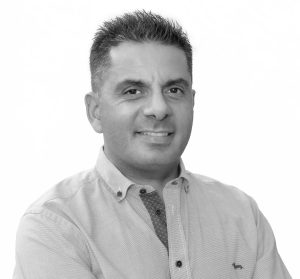Nearchos C. Panayi, is an orthodontist based in Limassol, Cyprus. He is an assistant Professor of
Orthodontics at the European University Cyprus, Dental school. He studied dentistry at Athens
Dental School (1992–1997) and orthodontics at Tel Aviv University (1998–2001) before building his
private practices in Limassol and Larnaca, Cyprus. His passion for digital technology encouraged him
to use it in orthodontics, and as a huge fan of the in-house 3D designing and printing concept. Dr
Panayi has helped develop ideas, and methods that will transform traditional orthodontics to
customized-centered digital orthodontics. He is the inventor of the orthodontic CAD software
Ubrackets for in-house designing of customized brackets. He is the editor of «DIY, Design It Yourself
Orthodontics» book that was released by Quintessence in July 2021. He is a co-author in other
orthodontics books and published articles on customized brackets, 3D printed aligners and material
research. He is an associate editor of the “Progress in Orthodontics” journal. He is married and has
six children.

Dr. Nearchos Panay
Bio
Abstract
Microplastics and Orthodontic Aligners: An Emerging Reality or a Myth
The introduction of orthodontic aligners has revolutionized orthodontic treatment, offering esthetic and removable alternatives to fixed appliances. However, their increasing use has coincided with growing concern regarding microplastic release into the oral environment. The biological consequences of chronic microplastic exposure, is proved by evidence from environmental and biomedical research. Current evidence on the presence, generation, and potential implications of microplastics derived is available in the literature. A critical appraisal of in vitro studies reveals consistent findings of microplastic and nanoplastic release by the orthodontic aligners, largely attributed to mechanical wear, thermal cycling, and chemical degradation in the intraoral milieu.
These phenomena appear more pronounced in aligner polymers compared to other dental materials such as acrylic resins or thermoplastic retainers, which demonstrate comparatively limited particle release. Ultimately, this issue calls for rigorous research, critical awareness, and responsible clinical practice as orthodontics navigates the balance between innovation and patient safety.